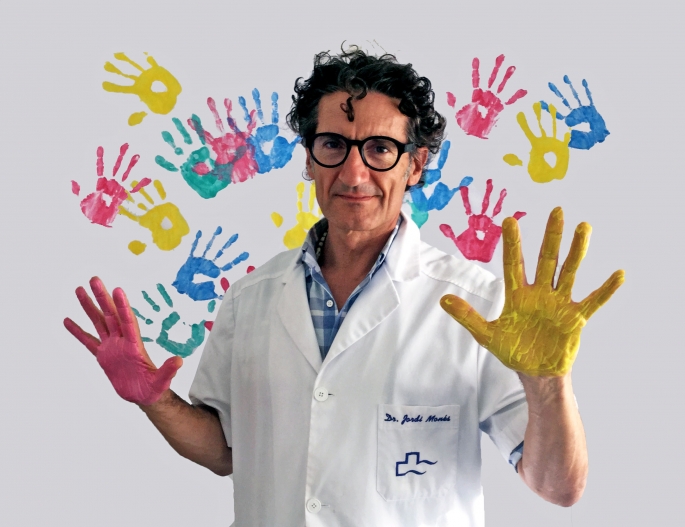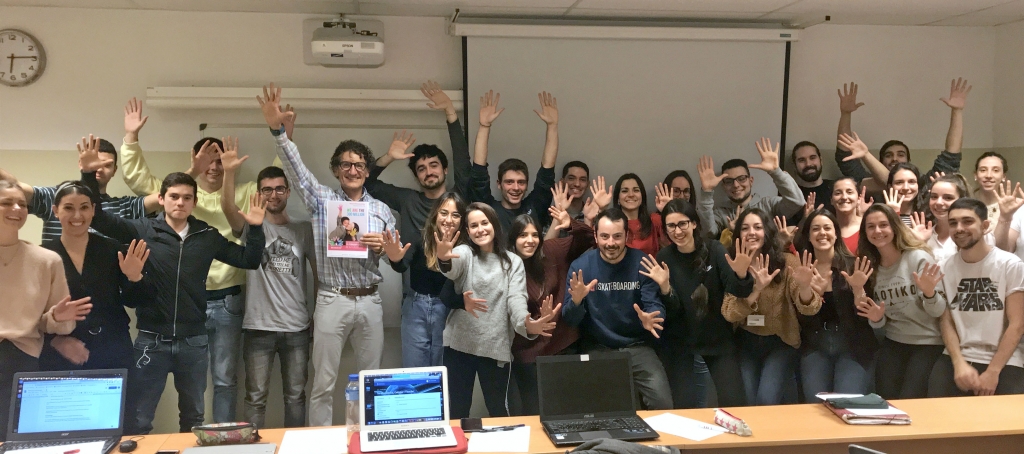On Rare Disease Day, Dr Monés says that “in research, what we must do is provide support and move from the laboratory to the patient as soon as possible”

The Barcelona Macula Foundation (BMF) has added its voice to World Rare Disease Day for another year in order to raise awareness and provide information about these pathologies. “In research, time is of the essence because the diseases can’t be stopped, the clock is ticking and, unless we hurry, there will be people whom we can’t help”, says Dr. Monés MD, PhD
For another year, the Barcelona Macula Foundation (BMF) has added its voice to Rare Disease Day, which is observed on the last day of February in order to raise awareness and provide information about these pathologies and position them as one of the main public health problems. With more than 7,000 minor diseases, these pathologies affect over 300 million people worldwide and more than 400,000 in Catalonia.
At the Barcelona Macula Foundation, we remain committed to discovering a solution to two diseases that are considered as rare: retinitis pigmentosa and Stargardt’s disease. “Just as we have discovered treatment for many blindness-causing diseases in the past twenty years, we will surely do so with many others in the next ten,”, says Dr Jordi Monés MD, PhD, Medical Director of the BMF. “When we conduct research, we bear in mind the cases of different people and this gives you the strength to progress as quickly as possible. Time is of the essence because the diseases can’t be stopped, the clock is ticking and, unless we hurry, there will be people whom we can’t help.”
Consequently, we continue to collaborate with other research centres around the world that share this aim. “In fact, in Catalonia we have a lot of talent to conduct research that really finds solutions. And we have a lot of resources to rescue people from blindness, and soon. What we need is financial support,” Dr Jordi Monés MD, PhD explains. “In our environment, we have a lot of basic research that is directing treatment paths in experimental models. What we need to do is provide support and move from the laboratory to the patient as soon as possible,” he adds.
With regard to retinitis pigmentosa, researchers from the Barcelona Macula Foundation have started the DRUG4SIGHT* project, funded by La Caixa and led by the IBEC (Institute for Bioengineering of Catalonia) and other state-level entities to develop new drugs in patients with retinal degeneration. The paradigm of this project is completely different from other therapeutic approaches. The aim here is to discover and characterise a series of drugs that can stimulate proteins still present in the degenerated retina and make the non-degenerated remnant cells act as photoreceptors, light-sensitive cells. The preliminary results are promising, but they need to be confirmed in animal models with a visual system closer to that of the human being.
With regard to Stargardt’s disease, the only centre in the Spanish state that participates in an international clinical trial on this pathology is the Institut de la Màcula, in close collaboration with the Barcelona Macula Foundation. This trial aims to test the efficacy and safety of Zimura (OPH2005, multicentre phase IIb study), a new drug that helps to stem the advance of this disease.
As part of the international campaign, Dr Monés taught a Masterclass on February 25 at the Faculty of Biology of the University of Barcelona. Under the title of “Addressing blindness using stem cells and gene therapy“, he presented the new therapies applied to degenerative retinal diseases, especially with gene and regenerative therapies with stem cells for geographic atrophy (GA) and for retinitis pigmentosa.

Dr Monés, after the Masterclass at Universitat de Barcelona
This year’s international campaign for Rare Disease Day bears the slogan “We are 300 million”. Built upon three pillars, it employs the word “rare” in its aim to reach patients.
- Rare is many: There are 300 million people, the equivalent of the world’s third most populous country.
- Rare is strong: The rare disease community is connected beyond borders and defends fairness.
- Rare is proud: The reality is that everyone knows someone affected by a rare disease: support for the community must be expressed with pride.
*The DRUG4SIGHT Project has received the support of La Caixa (ID 100010434), in accordance with agreement LCF/PR/ HR19 / 52160010.
